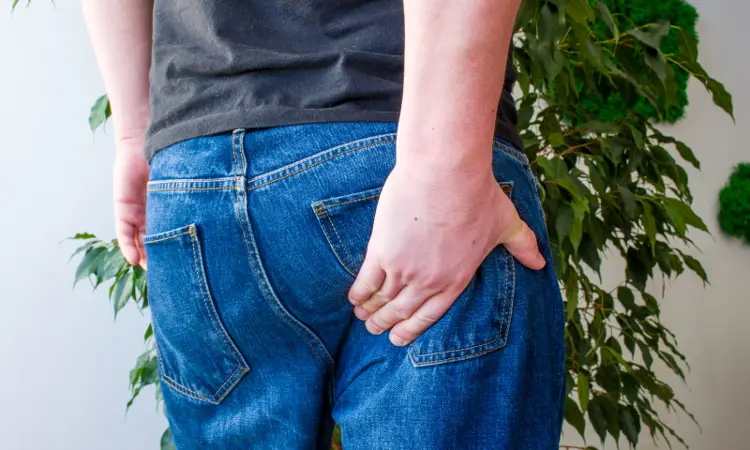- Home
- Medical news & Guidelines
- Anesthesiology
- Cardiology and CTVS
- Critical Care
- Dentistry
- Dermatology
- Diabetes and Endocrinology
- ENT
- Gastroenterology
- Medicine
- Nephrology
- Neurology
- Obstretics-Gynaecology
- Oncology
- Ophthalmology
- Orthopaedics
- Pediatrics-Neonatology
- Psychiatry
- Pulmonology
- Radiology
- Surgery
- Urology
- Laboratory Medicine
- Diet
- Nursing
- Paramedical
- Physiotherapy
- Health news
- Fact Check
- Bone Health Fact Check
- Brain Health Fact Check
- Cancer Related Fact Check
- Child Care Fact Check
- Dental and oral health fact check
- Diabetes and metabolic health fact check
- Diet and Nutrition Fact Check
- Eye and ENT Care Fact Check
- Fitness fact check
- Gut health fact check
- Heart health fact check
- Kidney health fact check
- Medical education fact check
- Men's health fact check
- Respiratory fact check
- Skin and hair care fact check
- Vaccine and Immunization fact check
- Women's health fact check
- AYUSH
- State News
- Andaman and Nicobar Islands
- Andhra Pradesh
- Arunachal Pradesh
- Assam
- Bihar
- Chandigarh
- Chattisgarh
- Dadra and Nagar Haveli
- Daman and Diu
- Delhi
- Goa
- Gujarat
- Haryana
- Himachal Pradesh
- Jammu & Kashmir
- Jharkhand
- Karnataka
- Kerala
- Ladakh
- Lakshadweep
- Madhya Pradesh
- Maharashtra
- Manipur
- Meghalaya
- Mizoram
- Nagaland
- Odisha
- Puducherry
- Punjab
- Rajasthan
- Sikkim
- Tamil Nadu
- Telangana
- Tripura
- Uttar Pradesh
- Uttrakhand
- West Bengal
- Medical Education
- Industry
New Endoscopic technique allows release of the sciatic nerve without performing piriformis tenotomy in Deep gluteal pain syndrome

Sciatic nerve entrapment is an entity that generates disabling pain, mainly when the patient is sitting on the involved side. According to some studies, the presence of fibrovascular bands has been described as the main cause of this pathology, and the sciatic nerve’s decompression by endoscopic release has been described as an effective treatment generally associated with a piriformis tenotomy.
Dante Parodi et al conducted a study to determine the medium-term functional results of endoscopic release of the sciatic nerve without resection of the piriformis tendon. Investigation performed at Cl´ınica RedSalud Providencia, Santiago, Chile.
‘The lateral compartment and the characteristics of the superficial and deep trochanteric bursa were assessed, as well as the septa and/or any extension of a hypertrophic nature, and a wide bursectomy was performed. Then the insertion of the gluteus maximus tendon was identified, which was considered to be the landmark to access the deep gluteal space. Once the sciatic nerve had been identified, its adjoining fibrovascular adhesions were released with blunt and controlled radiofrequency dissection maneuvers, performing this procedure from distal to proximal and then to the sciatic notch.’
A prospective, observational study included 57 patients who underwent an endoscopic operation for sciatic nerve entrapment. In all cases, a detailed medical history was obtained and a physical examination and a functional evaluation were performed using the modified Harris hip score (mHHS), the 12-item International Hip Outcome Tool (iHOT-12), and the visual analog scale (VAS) for pain. All patients had pelvic radiographs and magnetic resonance imaging (MRI) scans of the hip on the involved side and underwent a prior evaluation by a spine surgeon.
Key findings of the study were:
• This study included 20 male and 37 female patients with a mean age of 43.6 years (range, 24 to 88 years) and a mean follow-up of 22.7 months.
• The median mHHS improved from 59 to 85 points.
• The median iHOT-12 improved from 60 to 85 points.
• The median VAS decreased from 7 to 2.
• Postoperative complications occurred in 12% of patients: 1 patient with extensive symptomatic hematoma, 3 patients with hypoesthesia, and 3 patients with dysesthesia.
The authors concluded that – “Endoscopic release of the sciatic nerve by resection of fibrovascular bands without piriformis tenotomy is a technique with good to excellent functional results comparable with those of techniques in the literature incorporating piriformis tenotomy.”
Level of Evidence: Therapeutic Level IV.
Further reading:
Deep Gluteal Pain Syndrome Endoscopic Technique and Medium-Term Functional Outcomes
Dante Parodi, Diego Villegas et al
J Bone Joint Surg Am. 2023;105:762-70
http://dx.doi.org/10.2106/JBJS.22.00394.
MBBS, Dip. Ortho, DNB ortho, MNAMS
Dr Supreeth D R (MBBS, Dip. Ortho, DNB ortho, MNAMS) is a practicing orthopedician with interest in medical research and publishing articles. He completed MBBS from mysore medical college, dip ortho from Trivandrum medical college and sec. DNB from Manipal Hospital, Bengaluru. He has expirence of 7years in the field of orthopedics. He has presented scientific papers & posters in various state, national and international conferences. His interest in writing articles lead the way to join medical dialogues. He can be contacted at editorial@medicaldialogues.in.
Dr Kamal Kant Kohli-MBBS, DTCD- a chest specialist with more than 30 years of practice and a flair for writing clinical articles, Dr Kamal Kant Kohli joined Medical Dialogues as a Chief Editor of Medical News. Besides writing articles, as an editor, he proofreads and verifies all the medical content published on Medical Dialogues including those coming from journals, studies,medical conferences,guidelines etc. Email: drkohli@medicaldialogues.in. Contact no. 011-43720751


